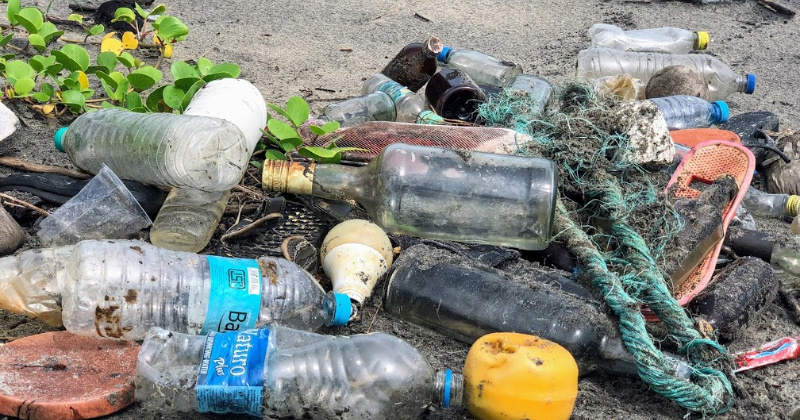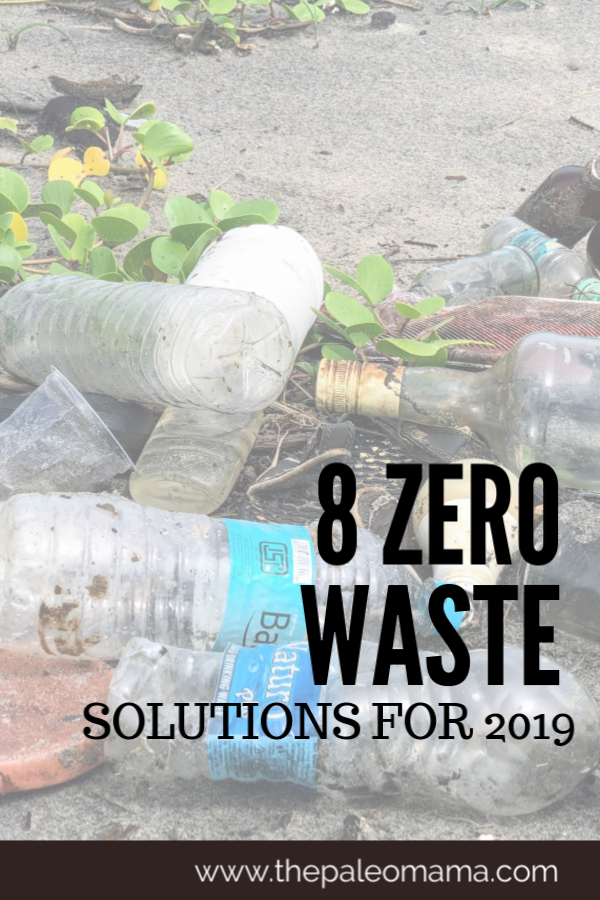
Waste is a B-I-G subject. In 2013, Americans generated 254 million tons of trash, and only 34 percent of that was recycled or composted. To bring this figure home, that means that the average American produces 4.4 pounds of trash per day!
Since, like my own family, many of you reading this are very concerned with living naturally, and with eliminating many of the dangerous chemicals and compounds found in our food sources, most of us probably are actively recycling our containers and throw away items. Many of you are no doubt also composting much of your food waste. These are excellent steps, ones we wish everyone in the nation would take. But unfortunately simply reducing our waste production is not enough—we need to be finding ways to eliminate it completely.
Enter the zero-waste movement, which is putting a focus on reducing waste production as much as possible. That means, among other things, no plastic, no wrappers, no Styrofoam, and no garbage. Many who have seriously tackled this problem have been able to seriously reduce their trash. Some even track their landfill trash to a single mason jar…goodonya (that was my 6 months in Australia coming out)!
Thankfully, in our neck of the woods, most restaurants don’t even offer plastic straws anymore and have resorted to making paying customers drink their beverage without a straw (gasp!) or have paper straws. Straws are a huge problem. 500 million straws get thrown into the landfill each day in America. Yes, you read that right…I saw day.
Why Is Reducing Waste So Important
Today’s waste is taken directly from our overflowing garbage cans to our nation’s overflowing landfills. Landfills stink, they leak ooze, hurt animals and people, and destroy large areas of our natural landscape. There are three important dangers to these landfills:
- A lot of the different materials that end up in landfills contain toxins that are eventually released and seep into the soil and groundwater. These toxins are major hazards to the environment and can last for several years. These toxins include arsenic, acids, lead, and mercury.
- Landfills form leachate—a liquid formed when waste breaks down and waters flow through it. Chemicals found in leachate include: methane, carbon dioxide, organic acids, alcohols, and aldehydes.
- Landfills are the third largest contributor to methane emissions. Landfill gas is 28 times more potent than carbon dioxide, and contributes to smog, and worsening health problems like asthma.
How to Get Started
So I want to give you some easy steps that you can use to begin reducing your own trash to get much closer to a zero-waste lifestyle. Each of these steps is a simple thing to do, and merely requires changing some long-held habits of how we handle our trash. You may be doing some of these already, or you may be ready to tackle this problems as one of this year’s resolutions.
1. Start a compost bin
Composting is the natural breakdown of organic matter to produce a crumbly nutrient-rich soil. As much as 25 percent of everything Americans throw out is compostable. Some of the ingredients you can compost are:
- Fresh grass clippings
- Flowers
- Nettles
- Vegetable and fruit peels
- Vegetable crop residue such as picked over plants
- Weeds
- Manure from animals
- Tea leave (not the tea bags)
Starting a backyard compost is easy. There are many suggested methods online that are practical, easy, and inexpensive. Start your research here.
I have 2 of these compost bins; one near our garden and kitchen and one near our barn and chicken coop. We save all of our food waste for our pigs or chickens and, also, have a countertop bucket that we can throw all our food waste in and then deliver to our eager farm animals.
2. Use reusable bags, not plastic
You can use your reusable bags for much more than just carrying your groceries. Use them for all your purchases, asking the checkout clerk to pack your purchases in your own reusable bag. Train yourself to keep two or three reusable bags in your car trunk, so you are always prepared. You can find 35 uses for these bags here.
3. Eliminate junk mail
Junk mail is a national problem! Nobody wants it, but everybody seems to get tons of it. The key to stopping the unwanted mail that comes to your home is getting your name off the mailing lists. Many businesses will gladly take your name off their lists if you just follow through and ask them to do it. You can also register on the National Do Not Mail List, by filling out the form found here. Follow these tips for ditching the junk mail you receive.
4. Phase out single-use products
It may seem old school to you, but your paper towels can be replaced with dish towels and rags, your tissues with washable handkerchiefs. Here are some of the single use products you should eliminate from your purchases:
- Single-serve coffee pods – use this instead.
- Paper coffee cups – get a nice travel cup.
- Boxes of tea bags – buy whole herbs and use a stainless steel tea bag.
- Disposable utensils
- Plastic bags
- Produce bags
- Feminine monthly products – try some cloth pads or DivaCup.
For more ideas for swapping out your single use products here.
5. Make your own DIY cleaning products
If you have followed my Paleo Mama page, you’ve seen many ideas for DIY products I’ve made or recommended before. See my recipes for floor cleaners and laundry detergent online. You can find many more suggestions and recipes for making your own DIY products in my book, The Home Apothecary: Home Crafted Recipes Using Herbs & Essential Oils.
6. Make your own DIY Beauty products
I’ve been making my own home and beauty recipes for years now. It took me awhile to accumulate everything I needed, so let me share my beginner’s kit for making DIY recipes with you. One of my favorite products to use during these cold months of winter is my DIY Facial Serum. It uses anti-aging essential oils like lavender, frankincense, geranium, and myrrh, along with Almond oil or Jojoba oil. Follow the recipe here, and begin using it before bed each night or snag a copy of The Home Apothecary, which has tons of DIY beauty recipes.
7. Stop using bottled water
There are more reasons than just the waste they create for making a choice to quit using bottled water. Here are some of the concerns they bring:
- America uses more than 17 million barrels of oil each year to make bottles. That’s enough to fuel 1.3 million cars for a year.
- The energy we waste using bottle water could power 190,000 homes.
- The average American uses 167 disposable bottles a year, but only recycles 38.
- The recommended eight glasses of water a day, using tap water, would only cost about $.49 per year, but that same amount of bottled waters costs $1,400.
- Antimony, found in PET plastic bottles, can cause dizziness and depression in small doses; in large doses it can cause nausea, vomiting, and death.
Believe it or not, there is a 280,000 percent markup for bottled water! There are dozens of filter options available for you to use to filter your own water. These include Britta pitchers, soma, filter attachments for your sink, and charcoal sticks.
Our home has a water purification system and each member of our family has a designated water bottle. This reduces have so many cups all over the house and helps each of us drink more water! When we travel we bring our Travel Berkey with us and use it in the hotel rooms or campgrounds.
8. Stop buying plastic food storage containers.
Plastic containers don’t last long anyways and leech chemicals into your food. I upgraded to glass food storage containers 5 years ago and still have the same containers. You can heat your food up in them, put them on the bottom level of the dishwasher and feel safe eating of them.
Get Started
Saving the planet isn’t just for hippies anymore. In the past twenty years, major US cities have set goals to be trash-free. It is going to take people to make this movement successful. It is people who influence waste-producing companies to make major changes toward producing less waste. Some major companies are leading the way. Ikea plans to approach a zero waste by 2020, and Nestle has announced that all 23 of its US factories achieved zero waste in 2015.
But the easiest way for you to be a part of reducing the enormous waste problem in America is to begin at home. I’ve give you some simple steps you can take. Begin doing your own research into this problem and its solutions, and commit to taking at least one major step toward change each month of this year.
Just as we cannot blame others for destroying the environment, so we cannot look to others to protect the environment. Responsibility for both begins at home.
Paul Griss, The Daily Planet

Leave a Reply